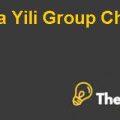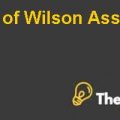Almadar Aljadid Telecommunication Company Case Study Solution
Introduction:
Almadar Aljadid Telecommunication Company is a subsidiary of Libyan Post Telecommunication and Information Technology Company, the company starts its operations in 1996. The company is offering various services to its clients which mainly includes roaming, SMS, MMS, voice mail, Call diverting, International calls, GPRS services and 140 other services as well. Apart from these activities the company is also planning to offer mobile payment ecosystem facility to its customers.
Libyan Telecommunication Industry:
The civil war in the Libya affected the economy of the country, and telecommunication industry is not exempted from this case. Due to this uncertainty in the economy, the prices of internet and SIM Cards was increasing day by day.Plus the telecommunication services was also not available in some parts of the country, such as eastern region. However, as the situation is now improving and the government is considering to implement number of new laws and regulations in the telecommunication sector primarily, in order to increase the quality of services, and to restore the confidence of investors in the telecommunication sector. In addition to this, the government is also investing heavily in developing the infrastructure of the telecommunication industry. Despite the huge destruction and civil war, it can be said with relative degree of certainty that the infrastructure of telecommunication in Libya, is far better than the other countries in African region.
WACC:
The weighted average cost of capital is the minimum return which the investors of Almadar Aljadid wants. The computation of WACC is based on many factors such as, risk that the investors are facing from investing in the company. If the risk of investors is high, the return might also be higher, and if the risk is lower than the return might also be lower. It can be said that the risk of investors in the case of Almadar Aljadid is higher, because of many factors which mainly includes, the difficult economic condition in the telecommunication industry of Libya and the capital structure of Almadar. Usually in the developing countries the risk of the investors is high, because of poor internal controls and higher unsystematic risk.
The WACC of Almadar is currently stood at 10.4%, which is calculated by multiplying the cost of equity with weight of equity add with the product of after tax cost of debt and weight of debt.
Capital Structure:
Capital structure plays an important role in the valuation of the company, if the capital structure comprises of more debt than equity, it is highly possible that the value of the company is lower. The capital structure is also greatly affect the WACC. It can be argued that debt is a cheaper source of finance, because of the following factors.Firstly, the risk of debt provider is lower, because of the guaranteed returns, asset backing and the tax savings are also available on the interest payments. However, the benefit of cheaper finance will be offset, because of the fact that increased debt portion will increase the risk of shareholders. In return the shareholders will increase their returns, thus reducing the benefits the company will get from cheaper source of finance.
If the capital structure of Almadar Aljadid is comprises of higher debt portion and lower equity portion, it might undermine the value of the company, because of the proven inverse relationship between the WACC and market value of the company.
Capital Expenditure:
It is assumed that, the in setting the mobile payment ecosystem project the capital expenditure that will be required is substantially low.This is the primary reason why the companies like Airtel and Vodafone uses free cash flow projections, to compare the value of conventional business and mobile payment ecosystem projects. It is because the free cash flows are approximately same as EBITDA less capital expenditure.
The main drivers of the capital expenditures in the project of mobile ecosystem payment, is the investment in the IT, which mainly includes the payments to acquire servers and license. On the other hand, the second major driver of capital expenditure, is the expenditure that will have to be incurred in the acquisition of offices and outlets. It is assumed that, the capital expenditure in the initial stages of the mobile ecosystem payment project would be around $2.5 million, while in the subsequent years the capital expenditure would be approximately four percent of the total variable cost...................
This is just a sample partial work. Please place the order on the website to get your own originally done case solution.













